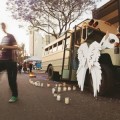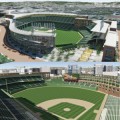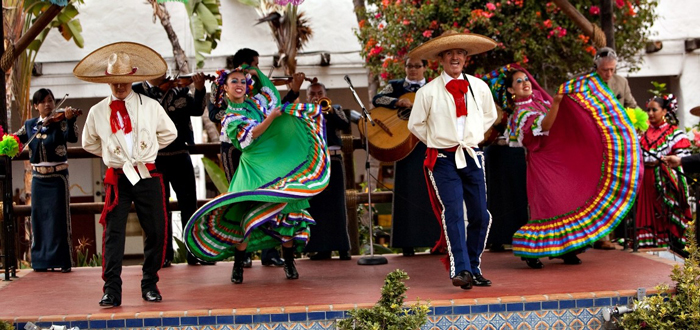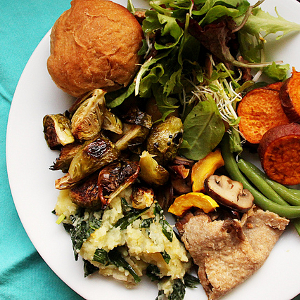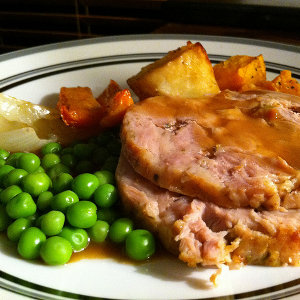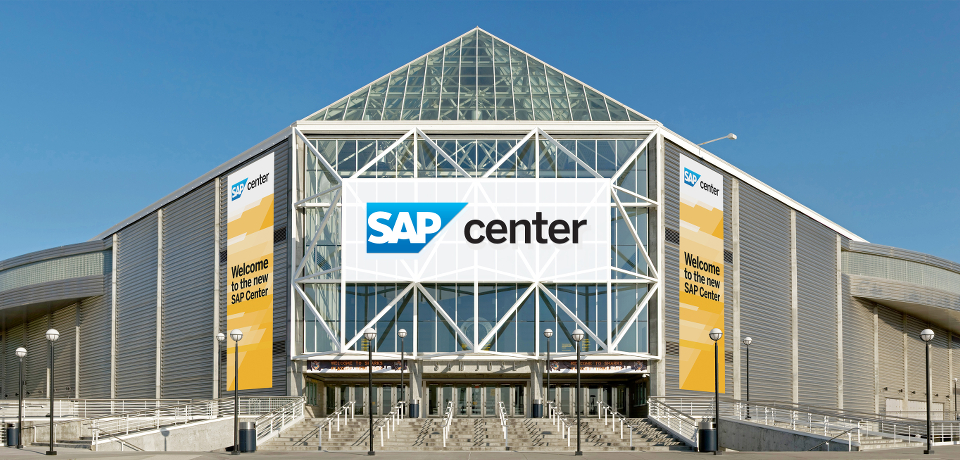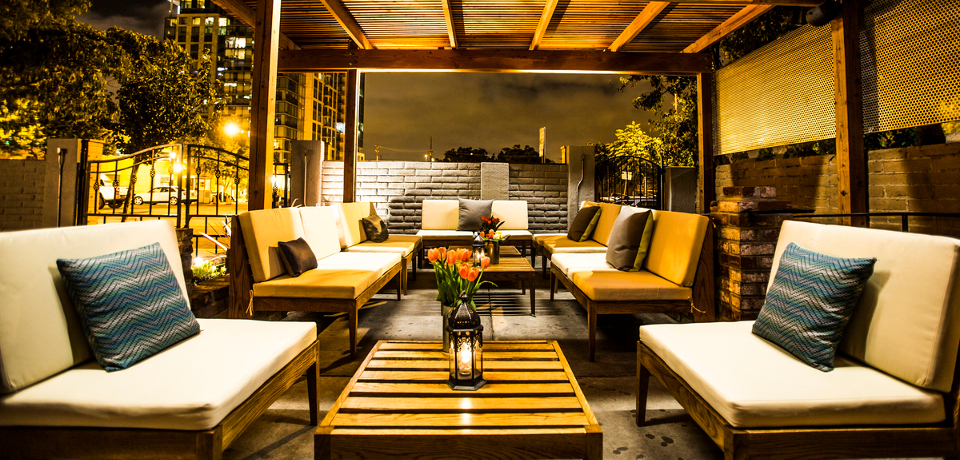The future of Music in the Park, San Jose’s long-running summer music festival, hangs in the balance as its popularity has outgrown the confines of Plaza de Cesar Chavez, the park between the Fairmont Hotel and The Tech museum.
The Thursday-evening series began more than 20 years ago as a way to draw people to an empty downtown that had little in the way of entertainment or public events. The free summer concerts lured nuclear families, hip-hop heads, tech geeks, San Jose State professors and students, baby mamas and business people to an all-inclusive scene particular to San Jose: West Coast with a South Bay twist.
Barring major changes, however, Thursday’s concert—the 13th and final event of the season—could be the last Music in the Park.
Scott Knies, executive director of the San Jose Downtown Association, admits that one of the nation’s biggest and oldest free concert series is at a crossroads. Complaints from downtown business owners and residents have increased this summer, and attendees at an Aug. 12 association meeting expressed the view that while everyone enjoys Music in the Park, the concerts now attract an “undesirable element.” That’s a euphemism for pot-smoking or gang-attired youth who cause trouble and don’t spend money at restaurants and entertainment venues.
Knies says the nonprofit organization will decide this fall if it should continue putting on Music in the Park, which has been a San Jose mainstay every June through August since 1988. Metro helped organize the first season and has been involved as its principal media sponsor ever since, contributing advertising and receiving sponsorship recognition.
“It’s been tweaked over the years,” Knies says, “but it may need some major surgery now. And the patient doesn’t always survive when it undergoes major surgery.”
When Music in the Park first started, the audience leaned more toward downtown office workers and suburban yuppies. As it grew into one of the biggest concert series in America, the crowd evolved, with tens of thousands of people flocking to the downtown core each summer from near and far.
Performers like Greg Kihn and Pete Escovedo have headlined shows from the start, while bands such as Smash Mouth, Tower of Power, Maroon 5, Better Than Ezra and Third Eye Blind have made stops over the years. With each passing summer, the crowds have grown younger, which was never so obvious as July 14, when the Neon Trees assembled an enthusiastic army of screaming tweens in front of the stage for this year’s biggest concert. But not all the attendees come for the music.
“It’s drawing a different element compared to crowds of year’s past,” says Steve Villarreal, head of SCV & Associates, which handles Music in the Park security. “Out of the blue, for some reason, this season there’s been this bad element that could be deemed as possible gang activity.”
Given the choice between Music in the Park or silence in the park, some downtown restaurateurs would take the latter. Matt Rocca, an owner of Original Joe’s, says that the decision to book more reggae bands this summer has attracted gangbangers and kids who just want to get drunk and high.
“I’m all for Music in the Park if it’s done the right way, but the way they’ve handled the last two years has been an absolute detriment on everyone’s business downtown,” Rocca says. “I hate to say that, because it used to bring people downtown for years. But if I have my two options, the existing Music in the Park or nothing, I’ll take nothing.”
Supporters of Music in the Park admit that changes are needed for the concert series to regain its reputation as a safe, family-friendly event. Less frequently seen these days are parents sitting on blankets and children running wild. The rear end of Cesar Chavez Plaza, far away from the stage, has become a haven for teenagers and young adults sporting disaffected looks beneath a haze of smoke.
Despite beefed-up security within the park, smoking and underage drinking violations appear to be rarely enforced.
“I’ve smelled less pot at a Grateful Dead concert than [at] Music in the Park,” says Eric Heckman, a Naglee Park resident and supporter of the series who’s a Downtown Association volunteer and former board member. “That’s one thing the police officers are ignoring. I don’t care what you’re smoking—if you’re smoking in a park, that’s against the law. If they just enforced that, I believe a lot of the wrong element would be forced to walk across the street or leave.”
The only people who don’t want to change Music in the Park seem to be those who attend for everything but the music. Kids from each sector of San Jose are now coming to the concerts to see and be seen.
{pagebreak}
“In a way, we think it’s a badge of honor that Music in the Park is something that the youth feel so comfortable with and show up to,” Knies says. “But last season, we noticed there was an increasing number of younger folk coming down not for the concert or the event itself but the scene. They’re not really engaged.”
According to local business owners, younger concertgoers aren’t spending as much money downtown while also eating up parking spaces that could go to potential diners.
“Anything that brings people here, I’m all for it,” say Brad Goldberg, managing partner of Billy Berk’s restaurant. “But I want it to help me.”
Berk’s manager Alex Chernett voiced concerns that the series was hurting the restaurant’s business at the Aug. 12 Downtown Association public hearing. The following Thursday, Berk’s was booming at 8:45pm, with only four empty tables and several empty barstools. On Friday at the same time, the restaurant had noticeably fewer patrons. Goldberg acknowledged that business was strong on the 12th but noted that it wasn’t always the case on Thursdays.
At Mezcal restaurant next door, business is generally strong on Music in the Park nights because the restaurant switches from sit-down dining to a DJ-style club setup. The San Jose Museum of Art fills its plaza with European-style outdoor cafe tables and umbrellas during the music shows.
While the consensus on business impact is mixed, the series suffers from an image problem stemming in part from this year’s bad publicity—some of it grossly overblown. Incidents of violence—taking place hours after the event and blocks away from the plaza— have drawn newspaper headlines. Villarreal says this has been one of the safest years since he took over security, and police records show only three calls for service related to fights at Music in the Park this summer.
Heckman believes the concerts have become a scapegoat for society’s ills. “Ironically, there’s nobody having problems in Music in the Park,” he says. “People causing trouble are on the outside.”
The largest skirmish in downtown this summer was a late-night brawl on June 9 at McDonald’s on San Carlos Street. The fight, which left two teenagers with stab wounds, took place at 11pm and three blocks away from the plaza. Media reports, however, linked the story to Music in the Park.
“When the event is correlated to incidents blocks away and hours after the event, what can an organization like ours do?” an exasperated Knies asks. “Something like that is the antithesis of what we stand for. The Downtown Association’s mission is to produce a positive impression of downtown.”
Economically, the Downtown Association has a tough choice to make about continuing Music in the Park. The concert series represents more than $400,000 of the nonprofit association’s annual revenues. Other revenues come from events such as the holiday ice rink and assessments on business and property owners, as well as contracts with the San Jose Redevelopment Agency, which has been downsized.
What’s distressing to supporters of Music in the Park, though, is that San Jose will lose a vital piece of its identity if one of its flagship events during the summer sinks.
“During the summer, at least among my friends and the office where I work, I constantly see emails saying, ‘Hey, we’re going to the park tonight,’” says Curtis Meacham, a 39-year-old musician who has played Music in the Park almost a dozen times. “As a culture we need that. We need something that’s not work and it’s not home. It’s somewhere between where everyone can get together and express a cultural identity.”
Nothing’s been decided yet, but it seems like the proverbial fat lady could take the stage this Thursday.

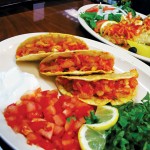 Review: Bacalhau Grill
Review: Bacalhau Grill  Jobs Calls it Quits at Apple
Jobs Calls it Quits at Apple 
